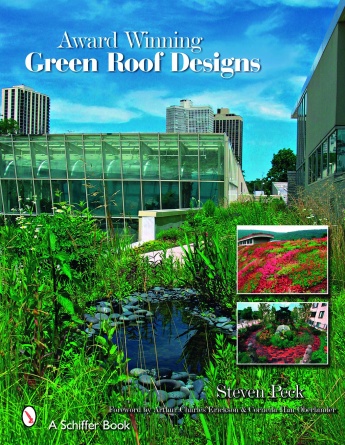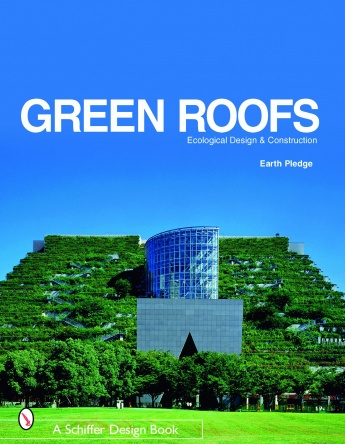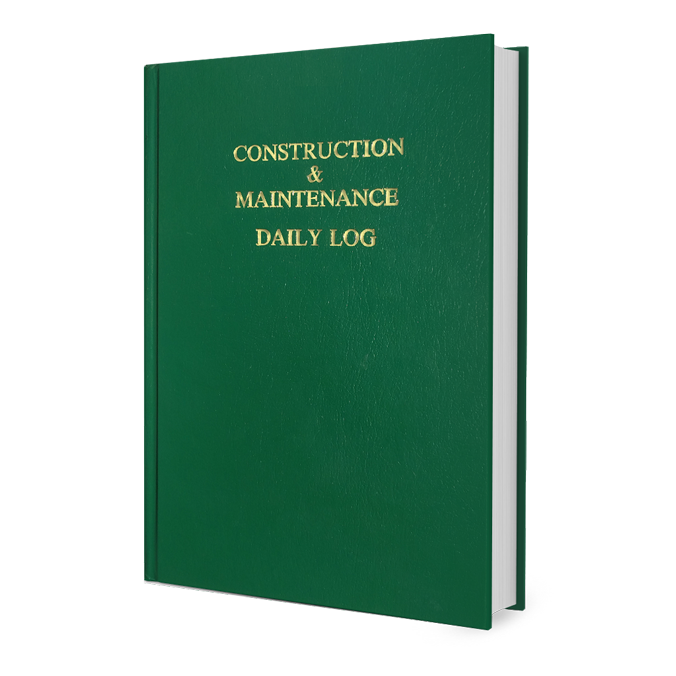Architect Profile: A Green Thumb in Louisiana
Trailheads and architecture: not your everyday field arrangement. For James R. Aultman, AIA, and his firm, James R. Aultman, AIA, An Architectural Corporation, the unique combination of a rails-to-trails program and a green building project was a perfect match.

Trailheads and architecture: not your everyday field arrangement. For James R. Aultman, AIA, and his firm, James R. Aultman, AIA, An Architectural Corporation, the unique combination of a rails-to-trails program and a green building project was a perfect match.
Aultman’s latest work involved the Covington Trailhead in Covington, La., which is the latest addition to the Tammany Trace, a way station along the trail. Several years ago, St. Tammany Parish (a county in the rest of the United States) was involved in the rails-to-trails movement, and Aultman saw an opportunity.
“They purchased several miles of abandoned railroad rights of way and converted them into a paved biking/jogging/walking/skating/equestrian path that extends from the southeast corner of the Parish and ends in Covington,” Aultman said. “It connects five communities.”
Covington, the Parish seat, was the last city to build its own trailhead, which is a way station that acts as a stopover for those traversing the Trace, and also acts as a small economic engine.
“Other trailheads have seen commercial and residential renewal happen in their immediate vicinity,” said Aultman, noting the Covington Trailhead has a visitor’s center, the offices of Covington Downtown Development Authority, restrooms, an amphitheater, a bandstand, an open-air Farmer’s Market, and a bell tower.
“The visitor’s center has Ludowici tile on the roof,” he said. “We chose Ludowici because visually it is quite reminiscent of the slate roofs that were so predominate in the 19th century around here.”
 Getting Started
Getting Started
Aultman said he became involved with the Covington Trailhead because of his work for the city. “I grew up here and live here with my wife and daughter,” he said. “As such, I have a civic responsibility to this city.”
Aultman has served on local boards and performed some pro bono work for the city.
“When the time came to select an architect for the trailhead, that played a large part in my selection,” he said. “I am also a landscape architect, as well as an architect, so that helped make me a good fit for the job.”
As part of the work on the trailhead, Aultman cataloged many of the historic structures in town.
“I interviewed lots of potential users of the trailhead, especially bicyclists and joggers,” he said. “I talked to train enthusiasts, fitness enthusiasts, any enthusiast who was enthusiastic enough to tell me what they would like to have in the trailhead.”
“I looked at the other trailheads in the Parish and determined what would be appropriate for us,” he continued. “After all the data was found, I did preliminary designs for presentations at public forums.
Finally, we had to produce contract documents for bidding and approval by the different jurisdictional agencies. I also was involved in construction administration.”
 Green Trailhead
Green Trailhead
Aultman said the longevity of Ludowici Roof Tile´s product was the main consideration in picking the tile - and the fact it is environmentally friendly.
“The entire project is a green project,” he said. “The framing of the building is yellow pine that is forested and milled within 50 miles of the project.”
Aultman said brick, wood and glass were other materials it made the most sense to use based on the location.
“As far as the green aspects are concerned, we were fortunate that we live where we do,” Aultman said. “One of the major materials used on site was brick. This particular brick is mined and produced less than 50 miles from the site. The majority of the wood framing came from tree farms within 50 miles of our site.
We have some interesting glass products used in the trailhead and the majority of them came from a glass company in Covington that does incredible work all over the country.”
Aultman said although the clay roof tiles came from more than 50 miles from the site, he considers them to be very green.
“The fact that the tiles are basically dirt that is formed and baked makes it a clean product,” he said. “After touring the Ludowici plant (in Ohio), I was very impressed with the efforts they put out to minimize the carbon footprint of their factory.”
“When you consider that these tiles will be in place for half a century or more, the fact that they are easily recycled if need be and the fact that they do an excellent job of keeping hot air out in summer and hot air in during the winter, I am very pleased with this true green product.”
Aultman said the building on the trailhead utilize “passive solar energy efficiencies.”
“The visitor’s center has 42-inch eaves that provide deep shade,” he said. “The southern exposure has no fenestration to prevent our summer sun from penetrating the interior of the building. The northern side of the buildings has windows that allow plenty of day-lighting.”
The original site of the trailhead was a railroad yard. “We have converted about 40 percent of what was once impervious land into green spaces, and have planted trees and bamboo where there was none previously,” Aultman said. “The Ludowici tiles fit in very nicely with our green efforts.”
Aultman said when he was at the Ludowici tile plant in New Lexington, Ohio, he realized how the factory acts as a good steward of the resources it uses and how the factory is close to the source of the dirt it uses to make its products.
“I cannot think of a more green product than dirt that is used for climate protection,” Aultman said.
 Additional LEED Projects
Additional LEED Projects
Aultman said his firm is involved in other green projects around Louisiana.
“Most of the work we do takes advantage of our local natural resources and indigenous building techniques,” he said. “I look at structures that functioned well in the days before we had air conditioning.
Those passive solar techniques still work. If we can reduce the amount of waste we produce, reduce the amount of fuel we expend and produce spaces that are economical to build and maintain, if we can do this and still have spaces and places that have a sense of magic, whimsy and worth, then we have a green project. I am not big on the green movement per se, but I think we have a responsibility to live well.”
Still, as a landscape architect and architect, Aultman gets to work on many aspects of green projects.
“Often, other architects invite me to be the landscape architect on their projects,” he said. “Right now, I am working on a private garden for a client and an incredible new building for a law firm.”
Aultman said whether he’s involved with green projects or landscape architecture, the challenges are many in his field. “Keeping up with technology, codes, and client’s expectations while having a family life,” Aultman said.
 Firm History
Firm History
Aultman has been president of his firm for 11 years.
“We were founded after having worked for a number of firms doing a variety of work from zoos to schools to residences, and decided that we could give top-notch customer service, and use the work as an expression of creativity and earn a living at it,” Aultman said. “The firm’s mission statement is: Help people through creative, responsible work. And do it well enough and often enough to make a living.”
Aultman said his firm performs architectural work that many choose not to get into. While many architects think big, Aultman often prefers to think small.
“The type of work we do is primarily small scale and design-intensive,” he said. “During the course of a year, we will probably design a church, an art gallery, a school building, some offices, some retail spaces and a few residences.”

The visitor’s center on the Covington Trailhead
has Ludowici tile on the roof, which is reminiscent of the slate roofs that
were predominate in Louisiana in the 19th century
Trailheads and architecture: not your everyday field arrangement. For James R. Aultman, AIA, and his firm, James R. Aultman, AIA, An Architectural Corporation, the unique combination of a rails-to-trails program and a green building project was a perfect match.
Aultman’s latest work involved the Covington Trailhead in Covington, La., which is the latest addition to the Tammany Trace, a way station along the trail. Several years ago, St. Tammany Parish (a county in the rest of the United States) was involved in the rails-to-trails movement, and Aultman saw an opportunity.
“They purchased several miles of abandoned railroad rights of way and converted them into a paved biking/jogging/walking/skating/equestrian path that extends from the southeast corner of the Parish and ends in Covington,” Aultman said. “It connects five communities.”
Covington, the Parish seat, was the last city to build its own trailhead, which is a way station that acts as a stopover for those traversing the Trace, and also acts as a small economic engine.
“Other trailheads have seen commercial and residential renewal happen in their immediate vicinity,” said Aultman, noting the Covington Trailhead has a visitor’s center, the offices of Covington Downtown Development Authority, restrooms, an amphitheater, a bandstand, an open-air Farmer’s Market, and a bell tower.
“The visitor’s center has Ludowici tile on the roof,” he said. “We chose Ludowici because visually it is quite reminiscent of the slate roofs that were so predominate in the 19th century around here.”

This photo shows the bandstand on the Covington Trailhead.
Aultman said he became involved with the Covington Trailhead because of his work for the city. “I grew up here and live here with my wife and daughter,” he said. “As such, I have a civic responsibility to this city.”
Aultman has served on local boards and performed some pro bono work for the city.
“When the time came to select an architect for the trailhead, that played a large part in my selection,” he said. “I am also a landscape architect, as well as an architect, so that helped make me a good fit for the job.”
As part of the work on the trailhead, Aultman cataloged many of the historic structures in town.
“I interviewed lots of potential users of the trailhead, especially bicyclists and joggers,” he said. “I talked to train enthusiasts, fitness enthusiasts, any enthusiast who was enthusiastic enough to tell me what they would like to have in the trailhead.”
“I looked at the other trailheads in the Parish and determined what would be appropriate for us,” he continued. “After all the data was found, I did preliminary designs for presentations at public forums.
Finally, we had to produce contract documents for bidding and approval by the different jurisdictional agencies. I also was involved in construction administration.”

The courtyard of the Covington Trailhead shows a visitor’s center, the offices of the Downtown Development Authority, restrooms, an amphitheater, a bandstand, an open-air farmer’s market and a bell tower.
Aultman said the longevity of Ludowici Roof Tile´s product was the main consideration in picking the tile - and the fact it is environmentally friendly.
“The entire project is a green project,” he said. “The framing of the building is yellow pine that is forested and milled within 50 miles of the project.”
Aultman said brick, wood and glass were other materials it made the most sense to use based on the location.
“As far as the green aspects are concerned, we were fortunate that we live where we do,” Aultman said. “One of the major materials used on site was brick. This particular brick is mined and produced less than 50 miles from the site. The majority of the wood framing came from tree farms within 50 miles of our site.
We have some interesting glass products used in the trailhead and the majority of them came from a glass company in Covington that does incredible work all over the country.”
Aultman said although the clay roof tiles came from more than 50 miles from the site, he considers them to be very green.
“The fact that the tiles are basically dirt that is formed and baked makes it a clean product,” he said. “After touring the Ludowici plant (in Ohio), I was very impressed with the efforts they put out to minimize the carbon footprint of their factory.”
“When you consider that these tiles will be in place for half a century or more, the fact that they are easily recycled if need be and the fact that they do an excellent job of keeping hot air out in summer and hot air in during the winter, I am very pleased with this true green product.”
Aultman said the building on the trailhead utilize “passive solar energy efficiencies.”
“The visitor’s center has 42-inch eaves that provide deep shade,” he said. “The southern exposure has no fenestration to prevent our summer sun from penetrating the interior of the building. The northern side of the buildings has windows that allow plenty of day-lighting.”
The original site of the trailhead was a railroad yard. “We have converted about 40 percent of what was once impervious land into green spaces, and have planted trees and bamboo where there was none previously,” Aultman said. “The Ludowici tiles fit in very nicely with our green efforts.”
Aultman said when he was at the Ludowici tile plant in New Lexington, Ohio, he realized how the factory acts as a good steward of the resources it uses and how the factory is close to the source of the dirt it uses to make its products.
“I cannot think of a more green product than dirt that is used for climate protection,” Aultman said.

The Covington Trailhead bell tower stands above the rest of the courtyard.
Aultman said his firm is involved in other green projects around Louisiana.
“Most of the work we do takes advantage of our local natural resources and indigenous building techniques,” he said. “I look at structures that functioned well in the days before we had air conditioning.
Those passive solar techniques still work. If we can reduce the amount of waste we produce, reduce the amount of fuel we expend and produce spaces that are economical to build and maintain, if we can do this and still have spaces and places that have a sense of magic, whimsy and worth, then we have a green project. I am not big on the green movement per se, but I think we have a responsibility to live well.”
Still, as a landscape architect and architect, Aultman gets to work on many aspects of green projects.
“Often, other architects invite me to be the landscape architect on their projects,” he said. “Right now, I am working on a private garden for a client and an incredible new building for a law firm.”
Aultman said whether he’s involved with green projects or landscape architecture, the challenges are many in his field. “Keeping up with technology, codes, and client’s expectations while having a family life,” Aultman said.

James R. Aultman's firm specializes in small, design-intensive projects.
Aultman has been president of his firm for 11 years.
“We were founded after having worked for a number of firms doing a variety of work from zoos to schools to residences, and decided that we could give top-notch customer service, and use the work as an expression of creativity and earn a living at it,” Aultman said. “The firm’s mission statement is: Help people through creative, responsible work. And do it well enough and often enough to make a living.”
Aultman said his firm performs architectural work that many choose not to get into. While many architects think big, Aultman often prefers to think small.
“The type of work we do is primarily small scale and design-intensive,” he said. “During the course of a year, we will probably design a church, an art gallery, a school building, some offices, some retail spaces and a few residences.”
Looking for a reprint of this article?
From high-res PDFs to custom plaques, order your copy today!






